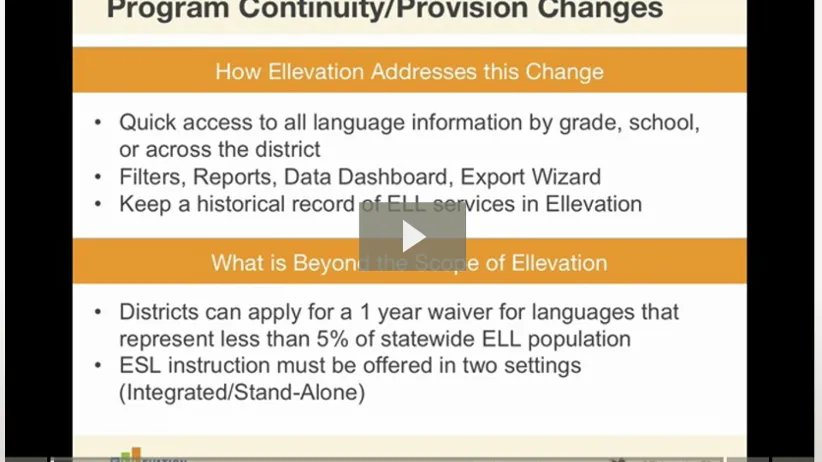Navigating CR Part 154 in New York


Navigating CR Part 154 in New York
There’s a buzz in New York right now, and it’s not about the latest Broadway hit or a Yankees winning streak. Educators all over the state are talking about amendments to CR Part 154, the regulations that govern how English as a New Language (ENL) programs operate and report on student progress. Significant changes made to the regulations have had a massive impact on ENL programs across the state.
The changes to Part 154, according to the New York State Education Department, call for:
- A more detailed intake process of ENL students
- More ways for students to qualify for exiting the ENL program
- Two years of transitional services after students exit, overlapping with the four years of monitoring required by ESSA
- Required meetings with the parents of ENL students (similar to Texas LPACs)
- Stricter reporting of students not making adequate progress
- More professional development on ENL instruction for teachers
- Requirements for all teachers to complete ENL coursework
This spring, Ellevation hosted a user gathering in New York that brought together ENL professionals from 11 districts to discuss the new policies and how to fulfill the requirements, which included presentations by Alba Gallegos and Lisa Estrada, the ENL Directors for Hewlett-Woodmere and Hicksville Public Schools, respectively.
The conclusion from the gathering? Ellevation’s offerings are saving districts across New York time and resources as they meet student needs and fulfill compliance obligations. As Ellevation Implementation Manager Greg Anderson pointed out, "the regulations are complex, there is a lot that administrators need to do to be in compliance, and Ellevation offers a lot of tools to support our partners in New York."
Syracuse City School District and Hewlett-Woodmere Public Schools, for example, use Ellevation Monitoring to meet one of the new Part 154 requirements. The regulations now state that students who have exited the ENL program must receive a half unit of instruction (or about 90 minutes) per week for two years, which puts pressure on staff who are already stretching to meet the needs of students currently classified as ENL.
Last year Syracuse and Hewlett-Woodmere received approval from the state to use the monitoring tool in place of additional instructional time for former ENL students. Instead of .5 units of instruction, they implemented an approved digital mointoring tool for just a fraction of the cost.
Ellevation Monitoring is one of the many features available through the Ellevation Collaborate module which ensures better collaboration between ENL teachers and classroom teachers. The monitoring feature, which is referenced in the U.S. DOE English Learner Tool Kit, empowers ENL teams to identify students across the district who need additional services, while eliminating the need for additional instructional time.
According to Jackie LeRoy, Director of Syracuse’s ENL, Bilingual and World Languages Program, “Ellevation allows our ENL and content area teachers to monitor all of our Former ELLs, and alerts us to any additional support they may need. With the implementation of Ellevation Collaborate, all content teachers now have an understanding of the importance of continual language development as they monitor their ELLs and Former ELLs for specific needs and supports throughout the school year."
To fulfill the new requirement for parent meetings, districts are also tapping into Ellevation’s Meeting Center, which makes it easy to schedule, keep notes, and report on family conferences.
Because the user gathering pulled together educators who are new to Ellevation and educators who have used the platform for several years, district leaders learned from one another’s experiences.
“It was helpful to hear from others' experiences with Ellevation. This allowed me to see what is possible and bring the platform back to my district more effectively,” shared Jennifer DiMaio, ENL Director for Valley Stream Central High School District.